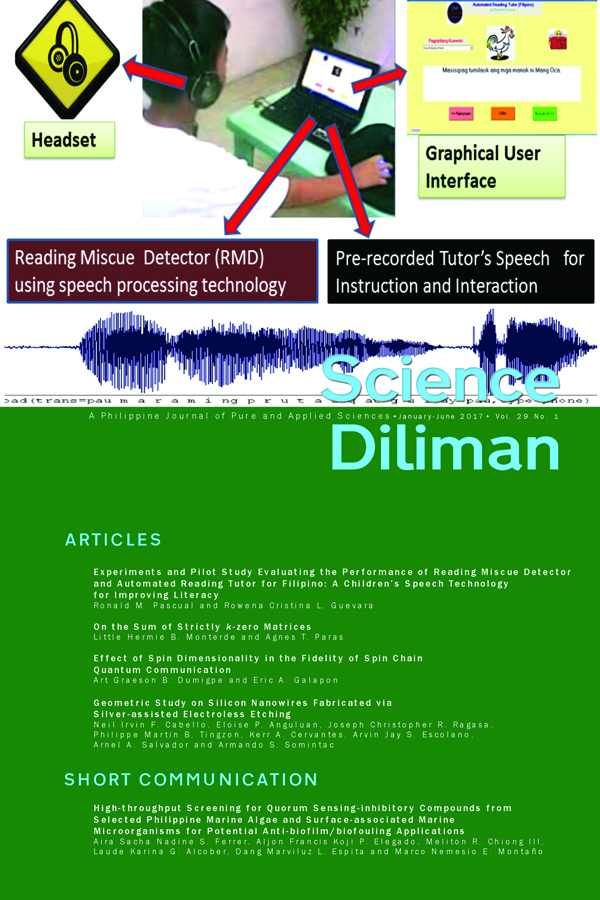Geometric Study on Silicon Nanowires Fabricated via Silver-assisted Electroless Etching
Abstract
Controlling the geometry of silicon nanowires (SiNWs) has been of paramount necessity for the viability of mass-producing nanostructured devices. The length, radius, and crystallinity of SiNWs grown via onestep and two-step electroless chemical etching of p-type Si(100) in this study were controlled by varying the concentrations of etchants and etching times. Scanning electron microscope images conf irmed that the length of the nanowires varied directly with increasing concentrations of HF and AgNO3 for the one-step etching process, and HF, H2O2, and AgNO3 for the two-step etching process. Diameters cannot be controlled via the electroless etching methods in the one-step process, but can be manipulated in the two-step process to some extent. X-ray diffractometry analysis exhibited that the SiNW's peak broadening can be attributed to the slight degradation of crystallinity of SiNWs compared to bulk silicon. From the Raman spectra, SiNWs, regardless of their geometric parameters, make excellent thermo-insulators due to the one-directional movement of phonons. The slight shift in peaks can be attributed to laser heating. Finally, photoluminescence analysis of SiNWs demonstrated that the length of the SiNWs varied the ratio of the surface defects of both the one-step and two-step processes, but not the intensity.
Keywords: Nanowires (81.07.GF), silicon nanowires (78.67.Uh), silver nanoparticles (78.67.Bf )



